Breast augmentation, a procedure that enhances the size and shape of the breasts, invariably results in scars from breast implants. These scars are a natural outcome of the surgical journey towards aesthetic enhancement. Understanding the appearance of scars from breast implants and their healing process is essential for anyone considering this cosmetic procedure.
The inevitability of scars from breast implants requires individuals to manage their expectations regarding these marks. The appearance of scars can vary significantly among individuals, influenced by factors such as skin type, age, and the skill of the surgeon. It’s crucial for potential patients to understand that these scars are a testament to the body’s remarkable ability to heal and adapt.
Selecting a qualified and experienced plastic surgeon is critical in ensuring the best aesthetic outcomes and in managing the healing process of scars from breast implants effectively. This blog post aims to provide an in-depth look at the appearance and healing of scars from breast implants, offering insights into their evolution over time and strategies for minimizing their visibility through proper care and advanced treatments. Our objective is to equip those considering breast augmentation with comprehensive information, helping them to make informed decisions and set realistic expectations for their transformation journey.
Types of Breast Implants and Their Scarring Patterns
Breast augmentation offers two primary choices in implants: saline and silicone, each with distinct characteristics and implications for scarring. Understanding the nuances between these options is crucial for anyone considering breast augmentation, as the type of implant can influence not only the aesthetic outcome but also the nature and appearance of scars from breast implants.
- Saline Implants: These implants are silicone shells filled with sterile salt water. The incision required for saline implants can be smaller since they are filled post-insertion, potentially leading to less noticeable scarring. However, the firmness of saline implants and their texture can affect the skin’s tension around the scars, influencing their healing process.
- Silicone Implants: Silicone implants are pre-filled with a silicone gel that closely mimics the feel of natural breast tissue. The incisions for silicone implants may be slightly larger to accommodate the pre-filled size, which could result in more prominent scarring. However, the natural feel and less tension on the skin might contribute to a smoother healing process of the scars from breast implants.
Both types of implants can be placed through various incision sites, each affecting the scarring outcome:
- Inframammary: Incisions made under the breast fold, common for both types of implants, tend to hide scars effectively within the natural creases of the body.
- Periareolar: Incisions around the nipple might blend scars with the natural border of the areola, but this method can affect breastfeeding and sensation.
- Transaxillary: Incisions in the armpit for saline implants allow scars to be placed away from the breast, reducing their visibility.
Common Incision Sites and Associated Scars
The choice of incision site is a significant factor in breast augmentation surgery, directly influencing the appearance and location of scars from breast implants. Each incision site offers its own set of advantages and considerations regarding scar visibility and healing.
- Inframammary Incision: This is the most common approach for inserting both saline and silicone implants. The incision is made along the natural crease under the breast, allowing the scar to be well-concealed beneath the breast fold. While this method offers excellent access for the surgeon and can accommodate all types of implants, the scars from breast implants are directly on the breast, which may concern some patients. However, these scars typically heal well and become less noticeable over time.
- Periareolar Incision: Made around the lower half of the areola, this incision blends the scar with the natural transition between the areola and the breast skin. This site can be advantageous for minimizing visible scars from breast implants, but it may carry a higher risk of affecting nipple sensation and breastfeeding capability. The healing of these scars depends significantly on individual skin types and the precision of the surgical technique.
- Transaxillary Incision: This approach involves making an incision in the armpit, through which the implant is inserted and positioned in the breast. One of the main advantages of the transaxillary method is that it leaves no direct scars on the breast implants area, making scars virtually invisible when the arms are down. However, this technique requires a high level of skill and may not be suitable for all types of implants.
Each incision site has its unique implications for the appearance and healing of scars from breast implants. The choice should be made after thorough discussion with a qualified plastic surgeon, considering the patient’s anatomy, the type of implant, and personal preferences regarding scar placement and visibility. Understanding these options empowers individuals to make informed decisions aligned with their aesthetic goals and comfort levels regarding scarring.
Factors Influencing Scar Appearance
The appearance of scars from breast implants is not solely determined by the surgical technique or the incision site; several other factors play a crucial role in how these scars heal and eventually look. Recognizing these factors can aid in managing expectations and tailoring post-operative care to enhance scar healing.
- Skin Type and Color: Individuals with darker skin tones may be more prone to developing hypertrophic scars or keloids, which are raised and more visible. Conversely, lighter skin may result in scars that are less noticeable but may show redness for a longer period.
- Age: Younger skin tends to heal faster but may be more susceptible to keloid formation. In contrast, older skin may heal slower but typically has a reduced risk of hypertrophic scarring.
- Smoking Status: Smoking significantly impairs the body’s healing process, potentially leading to more pronounced scars from breast implants. Nicotine constricts blood vessels, reducing oxygen and nutrient flow to the healing tissues, which can prolong the healing process and worsen scar appearance.
- Surgical Technique: The surgeon’s skill and the techniques used during the procedure can influence scarring. Precise incision placement, gentle tissue handling, and meticulous closure of the wound can all contribute to less noticeable scars.
Understanding these factors is crucial for anyone considering breast augmentation, as it highlights the importance of a holistic approach to surgery and post-operative care. By considering these variables, individuals can work closely with their surgeon to optimize the healing of scars from breast implants, employing targeted strategies to ensure the best possible aesthetic outcomes.
The Scar Healing Process: What to Expect
The journey of healing scars from breast implants is a gradual process that unfolds in stages. Being aware of these stages can help manage expectations and foster a conducive environment for healing.
- Immediate Post-Operative Period: Right after surgery, it’s normal to experience swelling, redness, and some discomfort around the incision sites. Surgeons typically cover these areas with gauze and may place drainage tubes to prevent fluid accumulation. Following your surgeon’s care instructions during this period is crucial for preventing infection and ensuring the incisions heal properly.
- The First Few Months: As the body initiates its healing process, scars from breast implants will start to go through significant changes. Initially, scars may appear raised and more pronounced, a natural part of the body’s healing mechanism. Over time, they will begin to flatten and fade. The extent and pace of this transformation vary widely among individuals, influenced by factors such as skin type, age, and overall health.
- Long-term Healing: Around a year after the surgery, the scars from breast implants will have matured significantly. They should be less noticeable, having faded into thinner, lighter lines. For some, scars may continue to improve beyond the first year. It’s important to continue caring for your scars beyond the immediate recovery period, as prolonged care can further enhance their appearance.
Understanding the healing timeline and what to expect at each stage can significantly impact the overall satisfaction with the surgical outcome. Patience and diligent care are key to navigating the healing process of scars from breast implants, leading to the best possible aesthetic results.
Tips for Minimizing Scar Appearance
Minimizing the appearance of scars from breast implants involves a combination of good wound care, protection, and specific treatments. Here are some effective strategies:
- Proper Wound Care and Hygiene: Keeping the incision site clean and dry is paramount in the initial days following surgery. Follow your surgeon’s instructions for wound care to prevent infection, which can worsen scarring.
- Silicone Sheets and Gels: Silicone-based products are widely recommended for scar management. They help hydrate the scar and reduce its thickness and coloration. Silicone sheets or gels should be used after the wound has fully closed and with your surgeon’s approval.
- Sun Protection: UV exposure can darken scars, making them more noticeable. Protecting scars from the sun by covering them or using a high-SPF sunscreen is crucial, especially in the first year after surgery when the scars are still maturing.
- Massage and Other Physical Therapies: Gentle massage can improve the appearance of scars by promoting flexibility and reducing thickness. Start this only after your surgeon confirms the incisions have healed completely.
- Stay Hydrated and Maintain a Healthy Diet: Adequate hydration and a nutritious diet rich in vitamins and minerals support the body’s natural healing processes, potentially improving the appearance of scars.
- Avoid Smoking: As previously mentioned, smoking can impair healing and worsen the appearance of scars. Quitting smoking before and after surgery can significantly benefit the healing process.
Scars from breast implants are a natural part of the healing process following breast augmentation surgery. While they are inevitable, their appearance can be significantly improved through careful management and the adoption of effective scar minimization strategies. Choosing a skilled surgeon, following post-operative care instructions diligently, and employing treatments like silicone sheets, sun protection, and massage can all contribute to less noticeable scars.
Ultimately, patience and a proactive approach to scar care are key. It’s essential to have realistic expectations and to give your body the time it needs to heal. Remember, the appearance of scars typically improves over time, and with the right care, they become a subtle reminder of the journey towards achieving your desired aesthetic goals.












